+ データを開く
データを開く
- 基本情報
基本情報
| 登録情報 | データベース: PDB / ID: 2l00 | ||||||
|---|---|---|---|---|---|---|---|
| タイトル | Solution structure of the non-covalent complex of the ZNF216 A20 domain with ubiquitin | ||||||
 要素 要素 |
| ||||||
 キーワード キーワード | METAL BINDING PROTEIN/PEPTIDE BINDING PROTEIN / A20 domain / ZNF216 / ubiquitin / zinc finger / ubiquitin binding / METAL BINDING PROTEIN-PEPTIDE BINDING PROTEIN complex | ||||||
| 機能・相同性 |  機能・相同性情報 機能・相同性情報: / : / : / : / : / Regulation of TP53 Degradation / Josephin domain DUBs / RAS processing / Regulation of PTEN localization / ER Quality Control Compartment (ERQC) ...: / : / : / : / : / Regulation of TP53 Degradation / Josephin domain DUBs / RAS processing / Regulation of PTEN localization / ER Quality Control Compartment (ERQC) / UCH proteinases / Interleukin-1 signaling / Aggrephagy / Pexophagy / PINK1-PRKN Mediated Mitophagy / Regulation of pyruvate metabolism / Peroxisomal protein import / Synthesis of active ubiquitin: roles of E1 and E2 enzymes / ABC-family proteins mediated transport / Metalloprotease DUBs / Endosomal Sorting Complex Required For Transport (ESCRT) / E3 ubiquitin ligases ubiquitinate target proteins / smooth muscle tissue development / Translesion synthesis by REV1 / Translesion synthesis by POLK / Translesion synthesis by POLI / fibroblast migration / Translesion Synthesis by POLH / respiratory system process / Termination of translesion DNA synthesis / Recruitment and ATM-mediated phosphorylation of repair and signaling proteins at DNA double strand breaks / vasculature development / Negative regulators of DDX58/IFIH1 signaling / skeletal system morphogenesis / Formation of the ternary complex, and subsequently, the 43S complex / Ubiquitin-Mediated Degradation of Phosphorylated Cdc25A / Regulation of PTEN stability and activity / Ribosomal scanning and start codon recognition / CDK-mediated phosphorylation and removal of Cdc6 / FBXL7 down-regulates AURKA during mitotic entry and in early mitosis / KEAP1-NFE2L2 pathway / Neddylation / Formation of TC-NER Pre-Incision Complex / Orc1 removal from chromatin / Major pathway of rRNA processing in the nucleolus and cytosol / MAPK6/MAPK4 signaling / platelet-derived growth factor receptor signaling pathway / face development / SRP-dependent cotranslational protein targeting to membrane / GTP hydrolysis and joining of the 60S ribosomal subunit / Gap-filling DNA repair synthesis and ligation in TC-NER / Nonsense Mediated Decay (NMD) independent of the Exon Junction Complex (EJC) / Nonsense Mediated Decay (NMD) enhanced by the Exon Junction Complex (EJC) / Formation of a pool of free 40S subunits / Antigen processing: Ubiquitination & Proteasome degradation / L13a-mediated translational silencing of Ceruloplasmin expression / Dual incision in TC-NER / ribosomal large subunit export from nucleus / Ub-specific processing proteases / modification-dependent protein catabolic process / protein tag activity / peroxisome / ribosome biogenesis / ribosomal large subunit assembly / cytosolic large ribosomal subunit / in utero embryonic development / cytoplasmic translation / protein ubiquitination / structural constituent of ribosome / ubiquitin protein ligase binding / DNA binding / zinc ion binding / nucleus / cytoplasm / cytosol 類似検索 - 分子機能 | ||||||
| 生物種 |   | ||||||
| 手法 | 溶液NMR / Rigid Body Docking, molecular dynamics | ||||||
| Model details | lowest energy, model 1 | ||||||
 データ登録者 データ登録者 | Garner, T.P. / Long, J.E. / Searle, M.S. / Layfield, R. | ||||||
 引用 引用 |  ジャーナル: To be Published ジャーナル: To be Publishedタイトル: Co-localisation of ubiquitin receptors ZNF216 and p62 in a ubiquitin-mediated ternary complex 著者: Garner, T.P. / Strachan, J. / Long, J.E. / Layfield, R. / Searle, M.S. | ||||||
| 履歴 |
|
- 構造の表示
構造の表示
| 構造ビューア | 分子:  Molmil Molmil Jmol/JSmol Jmol/JSmol |
|---|
- ダウンロードとリンク
ダウンロードとリンク
- ダウンロード
ダウンロード
| PDBx/mmCIF形式 |  2l00.cif.gz 2l00.cif.gz | 330.8 KB | 表示 |  PDBx/mmCIF形式 PDBx/mmCIF形式 |
|---|---|---|---|---|
| PDB形式 |  pdb2l00.ent.gz pdb2l00.ent.gz | 272.6 KB | 表示 |  PDB形式 PDB形式 |
| PDBx/mmJSON形式 |  2l00.json.gz 2l00.json.gz | ツリー表示 |  PDBx/mmJSON形式 PDBx/mmJSON形式 | |
| その他 |  その他のダウンロード その他のダウンロード |
-検証レポート
| アーカイブディレクトリ |  https://data.pdbj.org/pub/pdb/validation_reports/l0/2l00 https://data.pdbj.org/pub/pdb/validation_reports/l0/2l00 ftp://data.pdbj.org/pub/pdb/validation_reports/l0/2l00 ftp://data.pdbj.org/pub/pdb/validation_reports/l0/2l00 | HTTPS FTP |
|---|
-関連構造データ
| 関連構造データ |  2kzyC C: 同じ文献を引用 ( |
|---|---|
| 類似構造データ | |
| その他のデータベース |
|
- リンク
リンク
- 集合体
集合体
| 登録構造単位 | 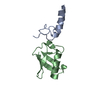
| |||||||||
|---|---|---|---|---|---|---|---|---|---|---|
| 1 |
| |||||||||
| NMR アンサンブル |
|
- 要素
要素
| #1: タンパク質 | 分子量: 6538.265 Da / 分子数: 1 / 断片: A20 / 由来タイプ: 組換発現 / 由来: (組換発現)   |
|---|---|
| #2: タンパク質 | 分子量: 8568.769 Da / 分子数: 1 / 断片: ubiquitin core domain / 由来タイプ: 組換発現 由来: (組換発現)  遺伝子: PUBI-2, UBI1 / 発現宿主:  |
| #3: 化合物 | ChemComp-ZN / |
-実験情報
-実験
| 実験 | 手法: 溶液NMR 詳細: NMR derived solution structure of the A20 zinc finger of ZNF216 with ubiquitin derived from NOE, PRE and RDC measurements | ||||||||||||||||||||||||||||||||||||||||||||
|---|---|---|---|---|---|---|---|---|---|---|---|---|---|---|---|---|---|---|---|---|---|---|---|---|---|---|---|---|---|---|---|---|---|---|---|---|---|---|---|---|---|---|---|---|---|
| NMR実験 |
|
- 試料調製
試料調製
| 詳細 |
| |||||||||||||||||||||||||||||||||||||||||||||||||||||||||||||||||||||||||||||||||||||||||||||||||||||||||||||||||||||||||||||||||||||||||||||||||||||||||||||
|---|---|---|---|---|---|---|---|---|---|---|---|---|---|---|---|---|---|---|---|---|---|---|---|---|---|---|---|---|---|---|---|---|---|---|---|---|---|---|---|---|---|---|---|---|---|---|---|---|---|---|---|---|---|---|---|---|---|---|---|---|---|---|---|---|---|---|---|---|---|---|---|---|---|---|---|---|---|---|---|---|---|---|---|---|---|---|---|---|---|---|---|---|---|---|---|---|---|---|---|---|---|---|---|---|---|---|---|---|---|---|---|---|---|---|---|---|---|---|---|---|---|---|---|---|---|---|---|---|---|---|---|---|---|---|---|---|---|---|---|---|---|---|---|---|---|---|---|---|---|---|---|---|---|---|---|---|---|---|
| 試料 |
|
 ムービー
ムービー コントローラー
コントローラー




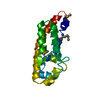


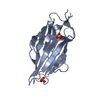

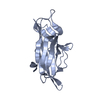
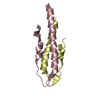
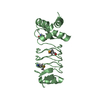
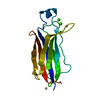
 PDBj
PDBj













 HSQC
HSQC